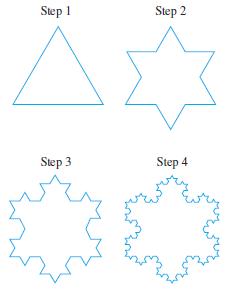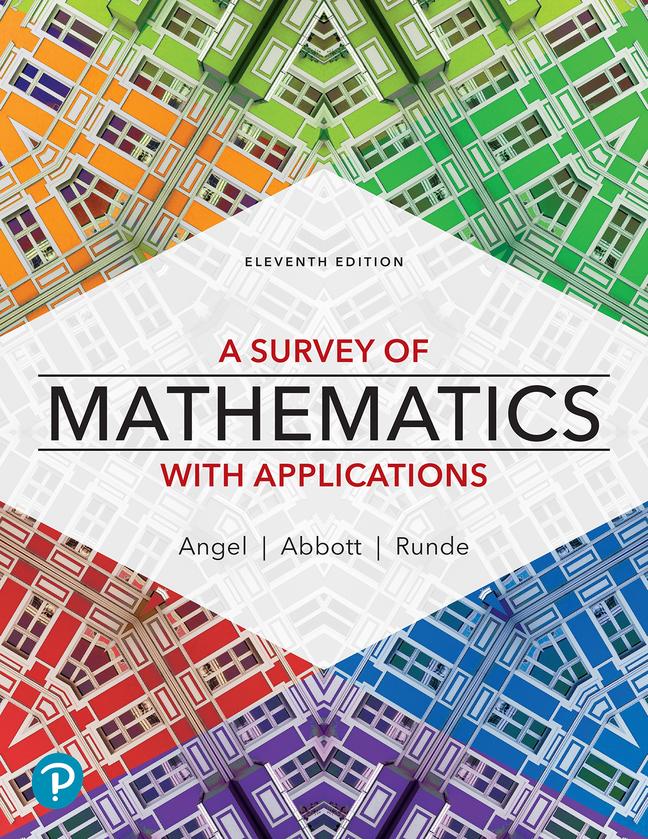In forming the Koch snowflake in Fig., the perimeter becomes greater at each step in the process.
Question:
In forming the Koch snowflake in Fig., the perimeter becomes greater at each step in the process. If each side of the original triangle is 1 unit, a general formula for the perimeter, L, of the snowflake at any step, n, may be determined by the formula

L = 3(4/3)n-1
For example, at the first step when n = 1, the perimeter is 3 units, which can be verified by the formula as follows:
L = 3(4/3)1-1 = 3(4/3)0 = 3 · 1 = 3
At the second step, when n = 2, we determine the perimeter as follows:
L = 3(4/3)2-1 = 3(4/3) = 4
Thus, at the second step the perimeter of the snowflake is 4 units.
a) Use the formula to complete the following table.*
Step. . . . . . . . . . .Perimeter
1
2
3
4
5
6
b) Use the results of your calculations to explain why the perimeter of the Koch snowflake is infinite.
c) Explain how the Koch snowflake can have an infinite perimeter, but a finite area.
Step by Step Answer:

A Survey Of Mathematics With Applications
ISBN: 9780135740460
11th Edition
Authors: Allen R. Angel, Christine D. Abbott, Dennis Runde





